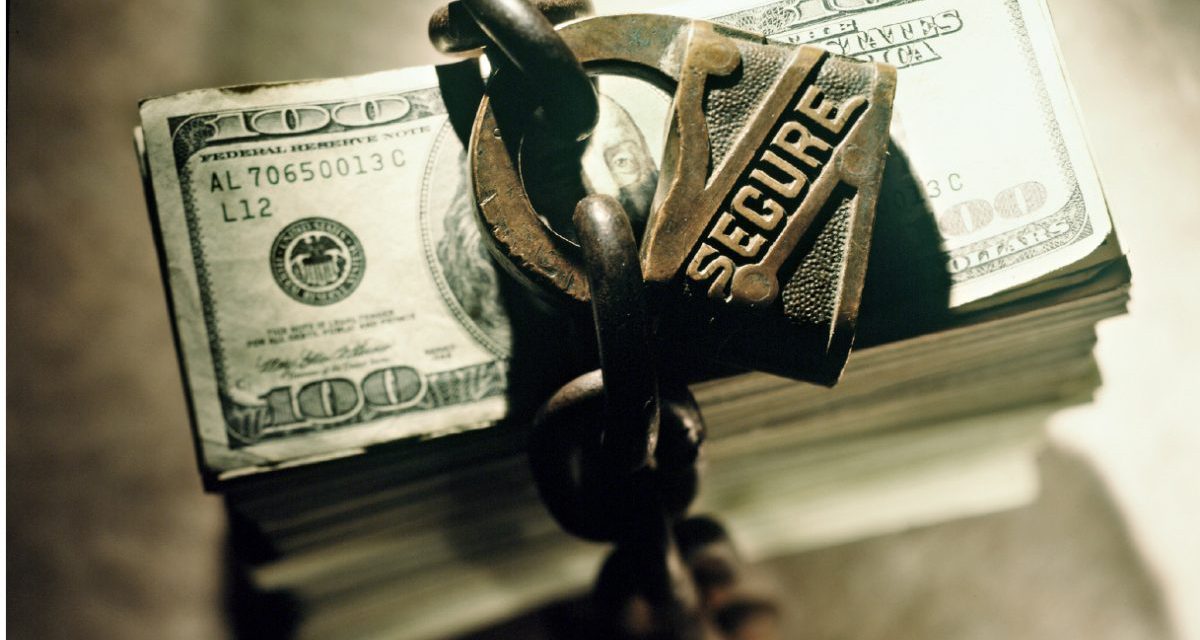The traditional 20% down payment has slowly but surely become a dinosaur in real estate transactions. But with mortgage interest rates now rising at an incredible clip, no-down carryback deals are coming back to life.
This article lays out the home seller’s financial risks in an installment sale structured with little to no cash down payment from the buyer.
Minimizing default risk
To illustrate this deal, consider a couple that decides to purchase income-producing property. They want to build a long-term real estate investment program – an estate – to create wealth for the family.
Each spouse earns a significant annual income, with a combined discretionary disposable income in excess of $125,000 annually. Despite a lack of substantial savings, the couple’s large stable income enables them to make significant additional monthly or quarterly payments to pay the seller for property they acquire, payments far greater than regular amortized monthly payments.
Thus, the couple is willing to subject themselves to a self-enforcing savings program by committing themselves to build equity in real estate through large front-loaded debt reduction, called a deferred down payment plan.
The periodic installments of principal are in addition to regular monthly payments. The seller views the principal payments as a deferral of the cash down payment.
The additional principal payments are made during the first two years following the purchase of the property. With the couple’s $125,000 in excess annual income to invest, they have the capacity to pay a seller at least an additional $200,000 in principal over a two-year period.
Purchase terms
At their agent’s suggestion, the couple signs a purchase agreement offer to acquire a suitable income-producing property on the following terms:
- a purchase price of $1,500,000;
- no cash down payment;
- the buyer pays all closing costs;
- a note and trust deed to be executed by the buyer in favor of the seller for the entire amount of the seller’s equity in the property;
- the interest rate on the note set at current mortgage rates;
- monthly payments based on a 30-year amortization schedule;
- eight additional quarterly payments of $25,000 each towards principal due on the note; and a 10-year due date for a final/balloon payment. [See RPI Form 150]
The buyer’s agent delivers the offer to the seller’s agent. Attached to the offer is a carryback disclosure statement prepared by the buyer’s agent. [See Form 300]
The risk of default and foreclosure
Before submitting the offer to the seller, the seller’s agent concludes the offer is unsuitable for their client.
The seller’s agent, on fulfilling their fiduciary duty and submitting the offer to their client, points out the carryback aspects of the offer which present additional legal and financial risks to them. These risks include:
- the seller is not cashed out since the net proceeds of the sale are in the form of a note — thus, the seller needs to consider countering with a greater down payment, a higher-than-market interest rate or a higher-than-market price for their property to compensate for the risk of loss eliminated by an all-cash sale;
- the carryback note evidences a nonrecourse debt — if the buyer defaults, the seller’s only remedy is to foreclose on the property since a money judgment is not allowed on nonrecourse debt; and
- without a down payment, cash proceeds from the sale do not exist to absorb the out-of-pocket cash costs to foreclose on a default.
For the property to support the financial burdens imposed on the carryback seller by a foreclosure, an equity of no less than 10% to 15% needs to exist in the property above the seller’s carryback mortgage. Without a cash down payment large enough to generate net cash proceeds for the seller on closing, the buyer has no net equity in the property at the time of closing.
Foreclosure Cost Sheet
To demonstrate the financial risk facing the seller if the buyer defaults and the seller forecloses, the seller’s agent prepares a Foreclosure Cost Sheet and reviews it with the seller. Using the cost sheet, the agent reveals the costs the seller will incur during a foreclosure and later resale of the property. The disclosure is used to estimate the cash reserves the seller needs to cover the costs of foreclosure on the property. [See Form 303]
The seller’s agent also prepares a carryback disclosure statement on a form designed to comply with mandatory financial and legal disclosures for carryback sales of one-to-four unit residential properties. Although its specific use is not required on other types of property, the financial disclosures of carryback consequences still fully apply and may be documented with the carryback disclosure statement designed for one-to-four unit residential properties. [See Form 300]
Presenting the offer with advice
The seller’s agent owes a fiduciary duty to the seller of care and protection by providing advice throughout the transaction. When presenting an offer to the seller, the seller’s agent needs to disclose aspects of the proposed transaction which are known or readily knowable by the agent that might affect a prudent seller’s decision to accept or reject the offer.
This advice includes:
- the legal aspects of carryback financing since the seller takes on the rights and obligations of a mortgage lender;
- the tax aspects of the profit and income reportable in an installment sale; and
- the financial suitability for the seller of the risks of loss involved in carrying a mortgage.
Related article:
Instead of accepting the offer or returning it as rejected, the seller’s agent suggests a counteroffer to restructure the transaction so it is financially suitable for the seller.
The agent considers that one hundred percent carryback financing on a no down payment transaction provides benefits for a seller (along with risks).
A seller may be motivated to enter into a no-down offer on some terms by their desire to:
- increase their likelihood of selling the property at the asking price;
- receive a monthly flow of interest income; and
- defer profit tax reporting on the sale until the principal is paid.
Motivating your seller
The seller who is willing to provide carryback financing may sell their property more readily if the property is not aggressively (read: properly) priced to sell for cash. Buyers often prefer to use the least amount of cash funds required for a down payment. For this reason, buyers are typically more interested in acquiring one property over another if the seller provides the financing buyers need to acquire property. Thus, seller carryback financing allows the buyer and seller to handle all the financing of the sale without the cost and effort of arranging financing with a lender.
The seller contemplating a no-down payment transaction may be motivated by benefits in tax considerations:
- no profit reported in the year of sale except for pro rata profit in principal received in the monthly payments through amortization;
- no debt relief occurs to trigger profit tax in the year of the sale, unless a mortgage exists with a balance greater than the seller’s cost basis (in which case the seller may use an all-inclusive trust deed (AITD) note to defer taxes on that amount of profit); and
- profit in the carryback note is only reported when principal is paid or the note is assigned in a sale or as collateral.
Default and beyond
In a little- to no-down payment carryback sale, the major legal and financial risk the carryback seller faces is a default by the buyer on the carryback mortgage. A default and failure of a pre-foreclosure workout forces the seller to initiate foreclosure to recover the amounts still owed.
Regarding foreclosure, first recall the sum of the combined amounts of the carryback mortgage, first mortgage and the costs of foreclosure and resale are supported solely by the value of the property. Further, the amount of the down payment is insufficient to cover the cost incurred to foreclose and resell the property.
As a result, on commencing foreclosure, the seller will need to use separate cash reserves to pay the costs of foreclosure and the carrying costs of the property until resold if they are to protect the value of their security interest in the property.
Unless the property value rises after the sale, funds expended on a foreclosure by the seller in a little- to no-down payment sale will not be recovered on resale of the property.
Also, an actual decrease in the marketability, and thus the value of the property, is foreseeable due to deferred maintenance and upkeep which often accompanies a default as the buyer knows they may lose the property.
Even if the carryback seller immediately initiates the steps necessary to foreclosure on a default, completing a typical problem-free second mortgage foreclosure and resale of the property can easily consume cash funds equal to 15% of the property’s value, paid approximately 50:50 from the seller’s cash reserves and cash proceeds from a resale.
Minimizing the seller’s risk of loss
All carryback sales involve some degree of risk of loss, as do all mortgages. However, a seller does not need to avoid a sale or a carryback mortgage solely because a potential risk of loss exists.
A prudent approach for the seller and their agent is to analyze the extent of
the risk and take steps to offset and cover the risk. This is done by:
- reducing the degree of risk with a proportionately larger down payment sufficient in amount to cover the cost of foreclosure and resale;
- receiving a premium in the form of an increased price, a higher interest rate or greater principal reductions on the carryback mortgage than provided by monthly amortization; or
- acquiring additional security, guarantees or letters of credit.
The seller does not need to rely solely on the real estate sold to secure their carryback note in a no-down transaction. Through discussions and counteroffers, sellers negotiate with buyers for additional security acceptable to the seller. The additional security can be in the form of real estate or personal property owned by the buyer or others.
Also, a carryback debt becomes recourse debt when it is secured by property other than, or in addition to, the property sold. However, carryback debt on real estate sold with, and additionally secured by, personal property sold as part of the transaction does not become recourse debt.
With recourse debt, the seller may foreclose judicially and pursue a money judgment against the buyer if the fair market value (FMV) of the mortgaged property becomes insufficient to satisfy the seller’s carryback debt at the time of the judicial foreclosure sale.
On preparing and presenting a counteroffer, the carryback seller and their agent negotiates to include provisions such as:
- a continuing guarantee for the carryback mortgage (guarantors are not protected by anti-deficiency laws as is the buyer who signed the note) [See Form 439];
- a security interest in personal property or other real estate, called cross-collateralization [See Form 436]; and
- the carryback of an unsecured note for part of the price (5% to 10% of the price). [See Form 424]
The seller can negotiate to cross-collateralize the carryback note by securing it by both the property purchased and other property, personal or real. Cross-collateralization may be used by the buyer to secure the carryback note with one trust deed describing multiple parcels of real estate as security for payment of the carryback note, called a blanket mortgage.
A blanket mortgage encumbering the property sold and other property provides the seller with more security and protection as the debt becomes a recourse debt. Thus, the seller is able to obtain a money judgment against the buyer when the combined market value of the properties on the date of a judicial foreclosure sale does not cover the balance due on the cross-collateralized carryback note.
Brokerage fee in a no-down deal
Payment of the brokerage fee is a personal concern for brokers and sellers involved in minimal or no down payment transactions.
The problem is not negotiating the amount of the fee, but when and how the broker will collect the fee in a cashless transaction, as occurs in a no-down sale or an exchange of equities (properties).
In cash sales, the fee is paid in cash by the seller on the close of escrow. When the sale or exchange includes little- to no-cash down payment and no new financing to generate cash funds, the broker, like the seller, often waits to be paid. Typically, the broker’s fee in a carryback sale or exchange is paid by the seller out of the first payments made by the buyer on the carryback note.
Alternatively, the buyer may pay the broker fees by signing a separate note to the broker for the amount of the fee (and reduce the seller’s carryback note by an equal amount) secured by a junior trust deed on the property acquired.
The purchase price for the real estate and transaction costs incurred by the buyer remain the same.
However, the broker needs to understand that a note signed by the buyer and secured by one-to-four unit residential property, purchased and occupied by the buyer, is nonrecourse debt.
Thus, if the buyer defaults and a senior mortgage holder (i.e., the seller) forecloses on the property, the broker’s trust deed is wiped out, leaving the nonrecourse note unsecured. Here, the broker simply loses their fee.
Editor’s note — This anti-deficiency rule only applies if the buyer purchases and occupies a one-to-four unit residential property. Under all other buyer situations, the broker may recover a money judgment for their unpaid services evidenced by the note previously secured by a now wiped-out trust deed.















A great alternative to consider is a Structured Installment Sale where all or a portion of sales proceeds are paid to a highly rated domestic insurance company and they make the installment payments.